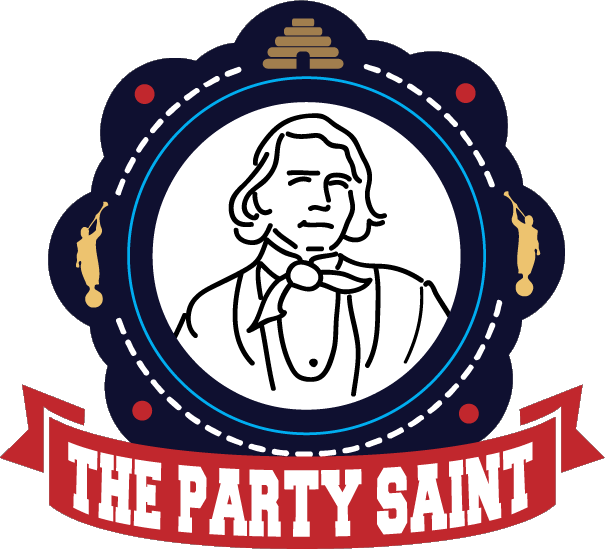Cultural night
Cultural night where the group can learn about different cultures or they can share their heritage with others. The assigned groups set up their displays around the room. Each group can bring information, maps, books, pictures, clothing, every day items, plants, etc for their display. We also had a food table where each food was listed and displayed with their contry’s name, for example: egg rolls for Taiwan, Black bean stew for brazil, Kimchee for Korea, Scottish Shortbread for Scotland, Beans and Tortillas for Mexico, etc…
Allow each team or individual a few minutes to present their country and tell about the culture.
Example: Brazil
It was on a report board with printed clipart from Brazil. The Brazil temples were also pictured and we discussed the church growth in Brazil at the end of the presentation.
Brazil’s Geography
Brazil is the largest of Latin American countries, and the 5th largest country in the world after Russia, Canada, China and the United States.
Brazil covers almost half of South America, it borders almost every country in South America except Chile and Equador.
The equator passes through the north of Brazil .
The Atlantic Ocean stretches across the eastern side of Brazil giving it a coastline of 4,578 miles.
Brazil has the largest river system in the world, The Amazon is the 2nd longest river in the world next to the Nile but it’s system the river with it’s tributaries is the world’s largest.
The People of Brazil
Europeans, American Indians, and Africans are the primary races.
Discovered by Cabral in 1500 and claimed by Portugal.
Settled by Portuguese colonists who built plantations for sugar cane and other warm growing crops, ie: fruits, beans, spices, coffee and nuts used the indigenous people as slaves for their plantations
Shipped slaves from Africa when the native people revolted
Mixture of all races developed due to frequent civil wars and periodic invasions of other European and neighboring countries
Independence from Europe was achieved in 1891 became the United States of Brazil.
In 1929 The Liberal Alliance was formed it modernized Brazil but was overthrown.
In 1964 the military took control but gave it back in 1985 during this time it became economically powerful.
Brazil has one of the most unequal distributions of wealth
Deep and enduring social and economic inequalities
Brazilian Culture
Portuguese is spoken by all Brazilians but the language has absorbed hundreds of words from Indian and African languages, Accents, dialects and slang vary by region.
Officially a Catholic country due to it’s early colonization but also a mixture of religions including some Eastern mysticism as well as Christianity.
Rich Brazilian architecture, especially in public buildings and churches
Brazil has a unique literary style based on old world and Roman Catholic traditions.
Brazilian music is highly diverse, Samba, Bossa Nova, and Lambada all came from Brazil.
Brazilian cuisine in influenced by indigenous foods and imported foods by the Portuguese and African peoples
Black beans, cassava, chilies, fish, shrimp, game, sugar cane, coffee, bananas, grapes, poultry, coconut, and many more tropical fruits and vegetables.
80% of Brazil’s population live in the cities.
Two largest cities, #1 Sao Paulo and #2 Rio De Janeiro.
Great inequality between city and rural people.
Brazilians celebrates New Years, and Holiday of Epiphany in January, Carnival IN February or March, Easter In March or April, Festas Juninas (midwinter festival) in June, Festival of the Goddess of the Sea in August, Independence Day in September, Nossa Senhora da Aparecida in October, All Soul’s day on November 2, Proclamation day in November, Christmas and the festival of Jesus of Navigators in December.
Brazilian technology :
tBiotechnology,
tSpace Programs (partner with NASA) ;
tComputers
tCars and Vehicles
tCommunications
tPaper Printing
tTextiles
tPharmaceutical
tFood and Food Processing Plants (supplying almost all South American countries)
tAgriculture (being the largest exporter in the world)
tElectronics
tConstruction
tFinancial Services (being the first Latin American country to have internet banking)
tSecurity Systems
tAerospace
tMining
tNaval Engineering
Primary Make-up of Religion in Brazil
74% Roman catholic
15.4% Protestantism
1.3% Spiritism
Sports in Brazil,/h3>
Football (Soccer) #1 sport in Brazil
ttwo other versions of “football” or soccer is
tFutsal and Footvolley
Volleyball
Beach volleyball
Basketball
Tennis
Auto Racing
Sailing
Brazilian Jiu – Jitsu
The LDS Church in Brazil
In 1997 the church reported a half a million members in Brazil that is third in the world of members per nation. First is the United States and Second Mexico.
In 1927 some missionaries from Argentina went to some German immigrants who had settled in Brazil. And in 1928 and 1929 they acquired the first property for the church in Brazil.
They opened a mission in Brazil in 1935 with a total of 143 members and 9 missionaries scattered throughout the mission.
The first ten years of the missionary work was only to a small community of German immigrants and in German. Then in 1938 The Elders were assigned to learn Portuguese. That year the translation of the Book of Mormon into Portuguese began.
In 1959 the first chapel was constructed in Brazil. In 1966 seven years later the first Brazilian Stake was organized.
By 1975 they had 27 chapels, 4 missions, 9 stakes, 45,000 members and 21 chapels being planned.
By 1997 they had 23 missions, 600,000 members to National population of 160,000,000 people.
By 2006 4 temples in Brazil.
Tudo Bem
This common Brazilian greeting wishes everything good to others. The way Brazilians live and share the gospel with their neighbors is making the greeting come true
This is one example and you can play Brazillian music. I brought Black bean stew and Brazillian rice but it can also be as simple as bringing fruit from the grocery store that was grown in Brazil
I printed out a work sheet for all the kids to fill in while each presentation was made:
With all the countrys that had been assigned
Then we ate the food and browsed the room and looked at everything that we had been shown
(This sounds like a fun activity! It could be done as a family history night focusing on where your ancestors are from, a ward or branch culture night, or even a stake activty if your unit has many people from many countries. If you have children attending the activity, it would be cute to make each child a”passport” and let them get a stamp at each country’s station. – Jenny)



